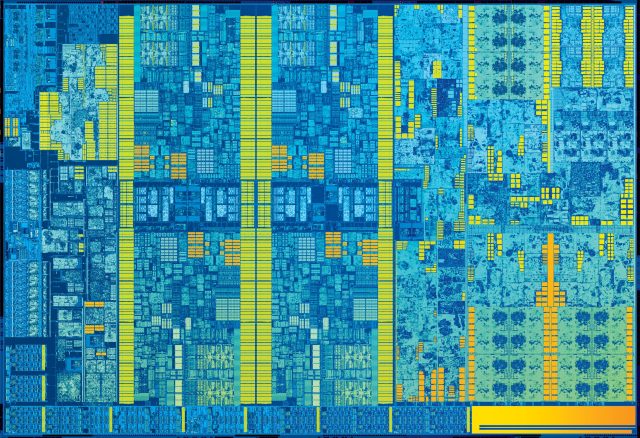
Intel Skylake die shot. (credit: Intel)
Since the news of the Metldown and Spectre attacks earlier this year, Intel has been working to reassure the computer industry that it takes security issues very seriously and that, in spite of the Meltdown issue, the Intel platform is a sound choice the security conscious.
To that end, the company is announcing some new initiatives that use features specific to the Intel hardware platform to boost security. First up is Intel Threat Detection Technology (TDT), which uses features in silicon to better find malware.
The company is announcing two specific TDT features. The first is "Advanced Memory Scanning." In an effort to evade file-based anti-virus software, certain kinds of malware refrain from writing anything to disk. This has can have downsides for the malware—it can't persistently infect a machine and, instead, has to reinfect the machine each time it is rebooted—but makes it harder to spot and analyze. To counter this, anti-malware software can scan system memory to look for anything untoward. This, however, comes at a performance cost, with Intel claiming it can cause processor loads of as much as 20 percent.